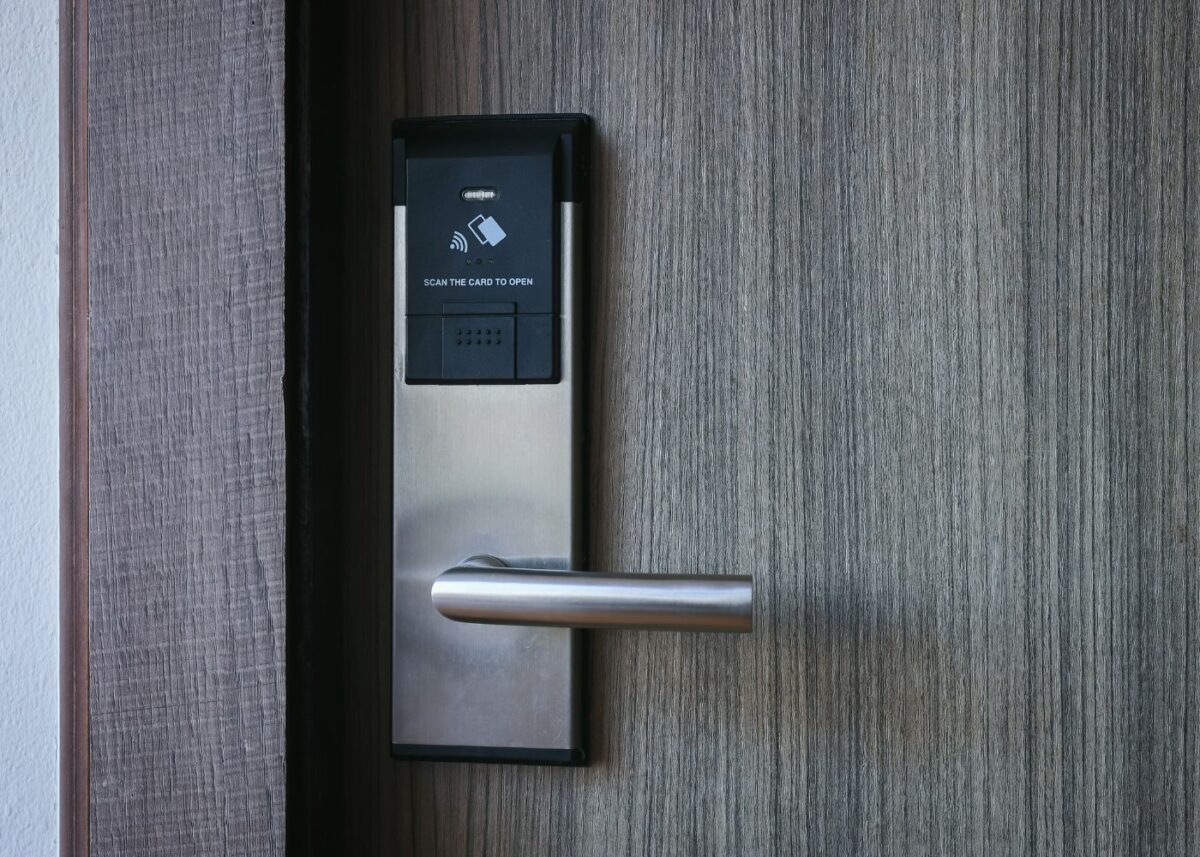The Definitive Guide to Installing Smart Door Locks

In an era defined by technological innovation, the integration of smart devices into everyday life has become ubiquitous. Among these advancements, smart door locks stand out as a cornerstone of modern security solutions, offering convenience, accessibility, and enhanced protection for residential and commercial properties alike. Whether you’re a seasoned installer or a property manager venturing into the realm of DIY projects, this comprehensive guide will illuminate the intricate process of installing smart door locks, empowering you to embrace the future of security with confidence and proficiency.
Step-by-Step Guide:
-
Selecting the Appropriate Smart Door Lock:
In the quest for optimal security solutions, the first crucial step is selecting the right smart door lock tailored to the unique requirements of your property and tenants. Considerations such as connection type, power source, brand reputation, and usability features play pivotal roles in this decision-making process.
Connection Type: Assess whether a WiFi-connected or Bluetooth-powered lock best suits the property’s infrastructure and accessibility needs. Determine whether a WiFi bridge is necessary to ensure seamless connectivity across all devices and users.
Power Source: Delve into the nuances of battery-operated versus hardwired locks, weighing the pros and cons of each option against the property’s specific requirements and tenant preferences. Conduct thorough research to identify the most reliable and energy-efficient power source for sustained performance.
Brand Analysis: Navigate through the diverse landscape of smart lock brands, evaluating factors such as reliability, durability, compatibility, and customer support. Prioritize brands renowned for their technological prowess, security features, and user-friendly interfaces, ensuring a seamless integration process and long-term satisfaction.
Usability Features: Identify key functionalities that align with the property’s security goals and user preferences, such as remote access, notification alerts, voice control compatibility, and integration with smart home ecosystems. Prioritize locks equipped with advanced encryption protocols and multi-factor authentication mechanisms to safeguard against potential cyber threats and unauthorized access attempts.
-
Essential Tools for Installation:
Armed with a clear understanding of your chosen smart door lock’s specifications and requirements, assemble the essential tools and resources necessary for a successful installation process. A comprehensive installation kit, including specialized screws, tools, templates, and instructional manuals, serves as your indispensable ally in navigating the intricate intricacies of smart lock installation.
Deadbolt: Ensure compatibility between the chosen smart lock and the existing deadbolt mechanism, adhering to manufacturer recommendations for optimal performance and security. Consider investing in high-quality deadbolt locks renowned for their durability, tamper resistance, and resistance to forced entry attempts.
Installation Kit: Utilize the provided installation kit to streamline the assembly process, leveraging specialized tools and resources to achieve precise alignment, stability, and functionality. Pay close attention to the accompanying instructional manual, following each step meticulously to avoid errors and setbacks.
Reference Manual: Keep the comprehensive reference manual within reach throughout the installation process, consulting it as needed to clarify instructions, troubleshoot issues, and optimize performance. Prioritize safety and precision at every stage, prioritizing adherence to manufacturer guidelines and best practices.
-
Replacement of Existing Lock:
With the preparatory groundwork laid and the requisite tools at your disposal, embark on the meticulous process of replacing the existing lock with the chosen smart door lock. Exercise caution and precision at every step, prioritizing thoroughness and attention to detail to ensure seamless integration and optimal functionality.
Disassembly: Methodically disassemble the components of the old lock, carefully removing screws, knobs, latch mechanisms, and strike plates as per manufacturer guidelines. Exercise caution when handling delicate components and intricate mechanisms, minimizing the risk of damage or misalignment.
Installation: Follow the step-by-step instructions outlined in the reference manual, meticulously aligning the components of the new smart lock and securing them in place with precision. Pay close attention to details such as bolt alignment, latch adjustment, and strike plate installation, ensuring smooth operation and reliable security.
-
Power Source Configuration:
With the physical installation complete, turn your attention to configuring the power source for your smart door lock, whether battery-operated or hardwired. Follow manufacturer guidelines and best practices to ensure a stable and reliable power supply, minimizing the risk of operational disruptions or battery failures.
Battery Installation: Insert the designated batteries into the battery compartment of the smart lock, adhering to polarity guidelines and ensuring a snug fit for optimal performance. Consider investing in high-quality batteries renowned for their longevity, reliability, and resistance to extreme temperatures.
Hardwired Connection: If opting for a hardwired smart lock, integrate the lock with the building’s electrical system according to manufacturer specifications and local building codes. Exercise caution when handling electrical components, ensuring proper insulation, grounding, and connectivity to prevent short circuits or electrical hazards.
-
Integration with Smart Devices:
With the physical installation and power configuration complete, proceed to integrate your smart door lock with compatible smart devices and digital platforms, facilitating seamless remote access, monitoring, and control. Leverage the designated smartphone application and online portals to establish robust connections and configure personalized settings tailored to your security preferences.
App Installation: Download the designated smartphone application corresponding to your smart door lock brand, ensuring compatibility with your device’s operating system and firmware version. Create a secure user account and follow the prompts to link your smart lock to the app, enabling remote access and control from anywhere with an internet connection.
Connectivity Setup: Establish a secure and stable connection between your smart lock and smartphone device via WiFi or Bluetooth technology, optimizing signal strength, range, and reliability. Configure network settings, encryption protocols, and access permissions to safeguard against unauthorized access attempts and data breaches.
Code Generation: Generate personalized entry codes and access credentials for authorized users, ensuring enhanced security and convenience for residents, tenants, and visitors. Implement multi-factor authentication mechanisms, time-sensitive access codes, and user-level permissions to customize access privileges and mitigate the risk of unauthorized entry.
Troubleshooting:
Despite meticulous planning and execution, occasional challenges and setbacks may arise during the smart lock installation process. Familiarize yourself with common troubleshooting strategies and best practices to address potential issues promptly and effectively, minimizing downtime and ensuring uninterrupted security functionality. Engaging a reputable Smart Installation Company can also provide valuable expertise and support in navigating any installation challenges, ensuring a seamless transition to modern security solutions.
Connection Issues: Troubleshoot common WiFi and Bluetooth connectivity issues, such as signal interference, network congestion, and device compatibility issues. Restart routers, reset network settings, and update firmware versions to optimize connection stability and reliability.
Software Updates: Stay abreast of firmware updates and software patches released by the smart lock manufacturer, addressing security vulnerabilities, performance optimizations, and compatibility enhancements. Follow manufacturer guidelines and best practices to execute timely updates, ensuring seamless integration and functionality.
Battery Concerns: Monitor battery levels and performance indicators regularly, addressing issues such as low battery alerts, battery drain, and power fluctuations. Replace depleted batteries with fresh ones or consider upgrading to high-capacity rechargeable batteries for extended lifespan and reliability.
Frequently Asked Questions:
- Cost Consideration: While the initial investment in smart door lock installation may vary depending on factors such as lock type, brand, and installation complexity, the average cost typically ranges between $300 and $500 for WiFi-enabled smart locks. Additional expenses may include professional installation fees, hardware accessories, and optional subscription services for advanced features and remote monitoring capabilities.
- DIY Installation: While self-installation is feasible for many smart door lock models, some installations may require professional assistance, particularly for properties with complex security configurations or specialized hardware requirements. Evaluate your technical proficiency, resources, and time constraints before embarking on a DIY installation project, weighing the benefits of convenience and cost savings against the potential risks of errors and complications.
- Locksmith Requirement: While locksmith services are typically unnecessary for standard smart lock installations, consulting with a licensed locksmith or security expert can provide valuable insights and recommendations for optimizing access control and security protocols. Consider engaging locksmith services for properties with unique security requirements, such as high-security locks, access control systems, or master key systems.
The installation of smart door locks represents a pivotal step towards embracing modern security solutions and safeguarding residential and commercial properties against potential threats and vulnerabilities. By following the comprehensive step-by-step guide outlined in this manual and adhering to best practices and industry standards, individuals can navigate the intricacies of smart lock installation with confidence and proficiency, unlocking a new realm of convenience, accessibility, and peace of mind for occupants and stakeholders alike. Embrace the future of security with smart door locks, and elevate your property’s protection to new heights of innovation and reliability. For further information about us and our services, do not hesitate to reach out.











